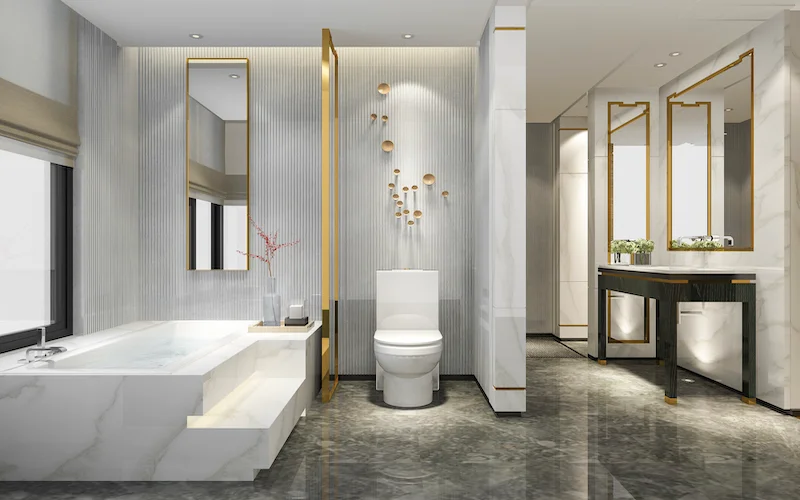Essential Home Security Features
Are you thinking of investing in a new home security system? Research shows that 60% of burglars are deterred from targeting a home if they determine that it has an on-site alarm system. If you're still weighing the benefits of a home security system, understanding its features can help you make an informed decision on how to best protect you and your home.
Traditional and Smart Locks
Locks are fundamental to home security, and the technology behind them has advanced significantly. Traditional locks on key entry points like your windows and doors provide a basic level of security, but smart locks offer enhanced features like remote locking and unlocking, access logs, and integration with other smart home devices. Smart locks can be controlled via smartphone apps, allowing you to monitor and manage access to your home from anywhere.
For example, with a smart lock, you can unlock your door remotely for a trusted friend or family member without needing to give them a physical key. Some smart locks also offer biometric entry options, such as fingerprint scanning, for added security. These features not only enhance security but also add a level of convenience that traditional locks cannot match.
Security Cameras
Surveillance systems are essential for monitoring your property. Modern security cameras offer high-definition video, night vision, motion detection, and remote viewing capabilities. Placing cameras at key points around your property can provide comprehensive coverage and deter potential intruders.
Security cameras serve as both a deterrent and a tool for catching intruders. The mere presence of cameras can discourage burglars from attempting a break-in. Additionally, recorded footage can be invaluable for law enforcement in the event of a crime. Many systems now offer cloud storage options, ensuring that your footage is safe and accessible from anywhere.
Doorbell Camera
A doorbell camera can record real-time footage of anyone who walks by your front door. You can see their faces up close, which is invaluable for identifying visitors and potential intruders. Many doorbell cameras also offer features like motion alerts, two-way audio, and integration with other smart home systems, enhancing your overall home security.
For instance, with a doorbell camera, you can see and speak to delivery personnel, confirm visitors' identities before opening the door, and monitor for package thefts.
Outdoor Camera
Outdoor cameras are designed to withstand the elements and provide continuous surveillance of your property's exterior. These cameras are often equipped with wide-angle lenses, night vision, and weatherproof casings. They can be strategically placed around the perimeter of your home to monitor entrances, driveways, and yards, providing a clear view of any suspicious activity.
High-quality outdoor cameras can cover large areas and offer features like zoom and pan-tilt-zoom (PTZ) capabilities, allowing you to get a closer look at any potential threats. The visibility provided by outdoor cameras is crucial for comprehensive home security, ensuring that all exterior areas are monitored effectively.
Indoor Camera
Indoor cameras help you monitor the interior of your home, keeping an eye on different rooms and hallways. These cameras are especially useful for checking in on pets, children, or elderly family members when you're not at home. Features like motion detection, two-way audio, and integration with security systems make indoor cameras a versatile and valuable addition to your home security setup.
Indoor cameras can also be used to monitor vulnerable areas, such as safes, storage rooms, and other places where valuables are kept. The ability to access live feeds and recorded footage remotely means you can always keep an eye on your home, no matter where you are.
Alarm Systems
An effective alarm system is crucial for securing your household. Alarm setups can instantly alert you to dangers such as break-ins, fires, or carbon monoxide leaks. Modern alarm systems often include features like smartphone notifications, automated emergency calls, and integration with other smart home devices. A well-designed alarm system not only helps to ward off potential intruders but also ensures that you are immediately aware of any threats to your home.
Advanced alarm systems can be customized to suit your specific needs. For example, you can set up different zones within your home that are monitored independently, allowing for more precise detection and response. Integration with smart home devices means that your alarm system can automatically trigger other security measures, such as locking doors and turning on lights, in response to an alert.
Security Sensors and Floodlights
Security sensors and floodlights add another layer of protection to your home. Motion sensors can detect movement around your property and trigger alarms or lights, scaring off intruders. Floodlights illuminate dark areas around your home, making it more difficult for anyone to approach undetected. These devices can be integrated with your overall security system, providing protection and visibility.
Security sensors can be placed on doors, windows, and other entry points to detect unauthorized access. When combined with floodlights, these sensors create a powerful deterrent by both alerting you to potential intrusions and making it difficult for intruders to remain hidden. Some floodlights also come with built-in cameras, adding another layer of surveillance to your security system.
Conclusion
Investing in a comprehensive home security system with features that best align with your needs is a proactive step toward protecting your property and loved ones. A well-equipped security system provides peace of mind, knowing that your home is safeguarded against intrusions and emergencies. That way, you'll keep your home safe and secure no matter what comes your way.






